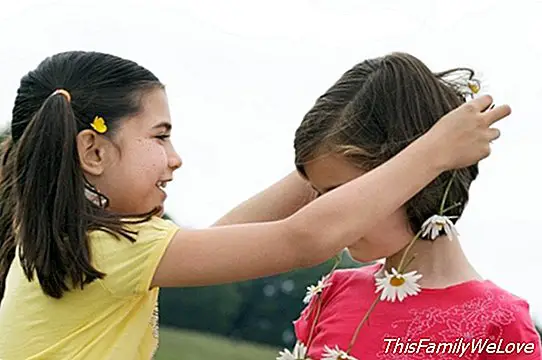Generosity, tricks to teach children

Teaching a child to be generous is not easy, especially considering that children are in a stage of natural selfishness and do not know how to put themselves in the place of those around them. These tricks can make it easier for parents to teach generosity. Educating a child so that he learns to give himself to others and offer his time and abilities adds a point of difficulty to this generosity that we want to instill in him.
Tricks to teach generosity to children
- Try to assimilate that you should also share your time and not only material objects. So, for example, you can spend part of your afternoon entertaining the baby or not making noise so that your older brother can study.
- Make him understand that sharing his games will also benefit himor himself, especially because his friends will also lend him their own things. In this way it will be much easier for you to get rid of a few things.
- Offer your own example daily. If the child checks how we leave him or his brothers our things (a book, a magazine, a comb ...), he will begin to assimilate the concept of generosity more quickly.
- Smile your son. He needs it. In doing so you are saying that it is important for you, that you love him and that you are happy with him.
- Never miss the compliments for every small gesture of generosity that our son may have. It is the best way to encourage these attitudes.
- To learn to think about others, It is good to start by encouraging him to do things that he is good at and likes. For example, if the child has a good hand for the drawing, we can ask him to make him a "teacher" with his younger brother and teach him to paint. Then we will ask them to show us what they have done and we will congratulate them, one for having learned, and the other, for having taught. Our son will learn little by little to put his talent at the disposal of others.
Learn generosity by educating by example
In many cases, parents adopt a victimizing attitude regarding the education of our children, work, household burden, etc. This image is meticulously collected by our children and grows with this same feeling in front of their own obligations.
How do we react to small accidents at home (the glass of milk that falls ...), do you dismiss it, or make a drama ?; When talking about your work, do you convey the problems, or comment what you enjoy in it? What do you look like when you are sick? Are you crawling around the house, not grooming yourself, or do you try to look as pleasant as possible, even if it hurts everything? Think that the way you behave, your children will. If you smile at the difficulties, they will see it as normal and tend to smile often.
Teach generosity and learn from experience
Children of these ages begin to have a certain social conscience, begin to internalize a sense of civility. But because of their lack of control and also because they may be too self-centered, they easily forget generosity and kindness when they are angry, tired or hungry.
Therefore, it is convenient to explain that generosity and service to others is a must of the people who gratify for themselves, with the joy of having fulfilled and with the satisfaction of doing something well done. At this age, explaining it in a very simple way, they already understand these concepts, but perhaps they understand it better with small stories or with graphic examples.
Through these examples we will make you see that everyone has the possibility of giving to otherss to make them a good, and that ability is like a treasure that is possessed and must be distributed, because if it is not delivered, it does not work either for oneself or for anyone. That treasure has only one purpose: to distribute it to do good to others, and that is what gives happiness. If nothing is given, people become selfish and egoism only produces sadness.
With generosity we seek happiness in others
It is, in short, that they know how to seek the happiness of others because it is one of the most direct ways to achieve their own. But children are not served by theories, they need to experience it.
Perhaps it can begin by demonstrating the opposite: selfishness produces sadness. Surely there will come an opportunity in which the son or daughter has bolted on not lending something, on not giving up part of his time to help, etc. After letting some time pass (the next day, for example, so he can still remember), the son will be made to see how badly he passed him, how sad he was and the bad time he made others go by.
In the same way, there will also come a time when you have given in to your tastes to help others. It is the moment of praise and recognition, great educational weapons available to parents.Thus, he will realize that besides giving a hand to another and feeling happy, he makes his parents happy.
Conchita Requero
It may interest you:
- Educate in values, generosity
- The value of effort in early childhood education
- Ideas to teach children how to collaborate




